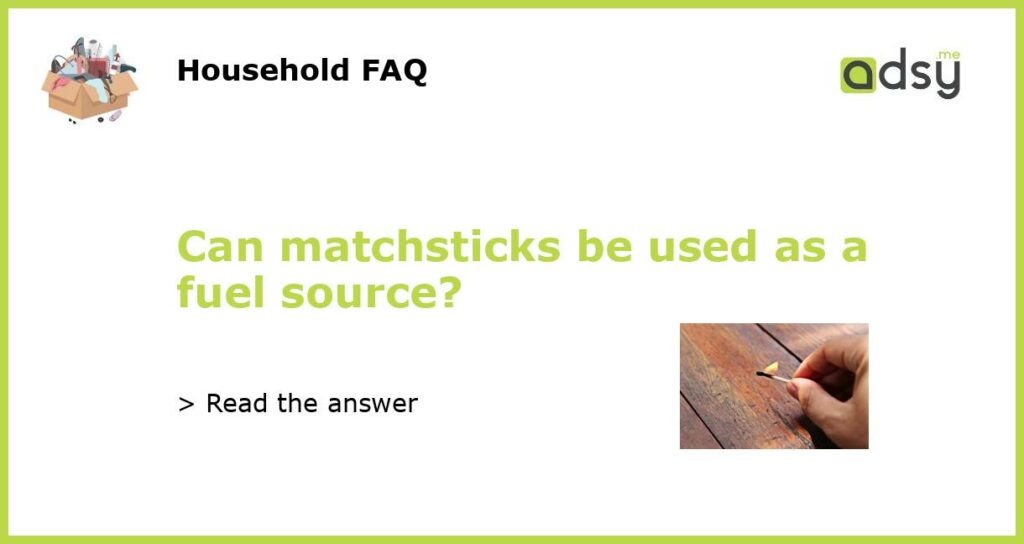What are matchsticks?
Matchsticks are small sticks made of wood or cardboard with a combustible tip that emits flames when struck against a rough surface. Typically, matches come in a small cardboard box that contains multiple matchsticks.
Composition of matchsticks
The combustible tip of a matchstick is made up of several chemical components like potassium chlorate, sulfur, and glass powder. The stick is made up of wood or cardboard, which is usually mixed with powdered glue that binds the stick together.
Can matchsticks be used as a fuel source?
Although matchsticks may seem like a convenient source of fire, they are not a practical fuel source for several reasons. Firstly, matchsticks produce a very short flame, which lasts only a few seconds and are not ideal for cooking or heating needs. Secondly, the combustion of matchsticks releases toxic chemicals, which can be harmful to both humans and the environment. Therefore, using matchsticks repeatedly over a longer period of time as fuel can be dangerous.
Advantages of using other fuel sources
There are several alternative fuel sources to matchsticks that have a longer burn time and are safer for human use and the environment. Some of these sources include wood, coal, natural gas, propane, and electricity. These sources have a longer burn time, are more readily available, and can be harnessed for various purposes like heating and cooking. Additionally, some of these energy sources are renewable, making them a more sustainable option in the long term.
In conclusion, although matchsticks may be useful for small fire lighting tasks, they are not practical for use as a fuel source. The combustion of matchsticks releases toxins that may be harmful and their short burn time makes them impractical for any type of sustained fuel use. There are other more readily available, longer-lasting, and safer fuel sources that are far more preferable to matchsticks for various heating and cooking needs.






